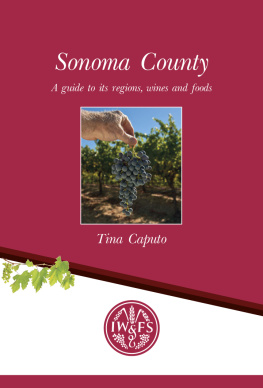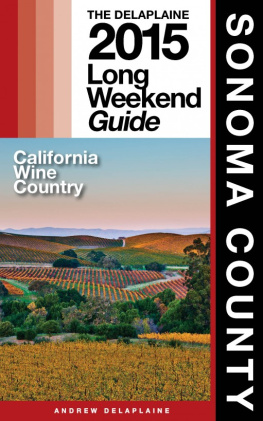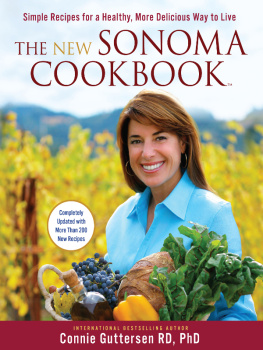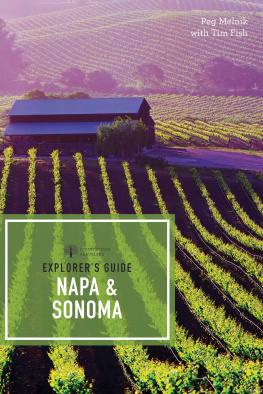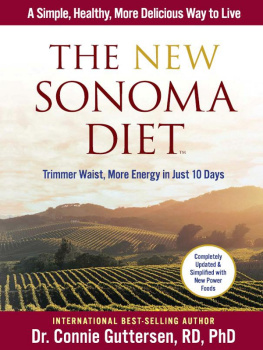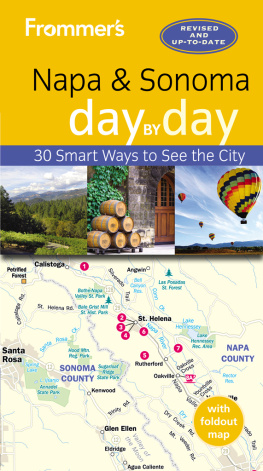Contents
Guide
The International Wine & Food Society
Established in London in 1933 by renowned wine connoisseur and gourmet, Andr Simon, The International Wine & Food Society (IWFS) now has 140 branches in 33 countries, from Los Angeles to London, Bangkok to Bombay, with over 6,000 members spanning the globe.
Society members meet regularly to share their passion for good food and wine. As a member of a branch you are part of a team and the events organised are many and varied. You can push the boundaries trying new experiences, whether they are tastings hosted by experts, lunch at a local culinary school or dinner at an exciting new restaurant.
But it doesnt stop there. As part of this international organisation there are also many other opportunities. As well as local activities, the Society organises wine and gastronomic tours, publishes an annual vintage guide, monographs and quarterly newsletters, regionally and internationally, as well as many other dining and travel related benefits. You are also provided with the name of a member from every one of our worldwide branches, so you have a contact almost everywhere you travel.
The Society operates in three zones the Americas, Europe Africa and Asia Pacific. Visit our vibrant website and click on your zone. Locate a branch near you, look at upcoming events, view previous newsletters or visit our Blog to find out more. You could also become an independent member, or even set up a branch of your own. Well help you along the way.
As a member of the IWFS the world of food and wine is within easy reach. Join us and embrace it
To find out more about becoming a member, visit our website www.iwfs.org or call our international head office
on +44 (0)20 7827 5732.
Sonoma County
A guide to its regions, wines and foods

Tina Caputo
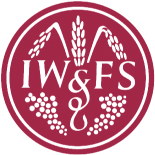
Contents
Napa might be the first Californian region to spring to a newcomers mind, but spectacular terrain, diverse terroirs and a warm welcome make Sonoma the favourite for many
When I moved from Michigan to San Francisco 25 years ago, there was only one California wine region I knew anything about: the Napa Valley. Working in upscale restaurants during college had taught me that much. Sure, I had heard of Sonoma, but it was the Mary Ann to Napas Ginger; the hamburger to Napas filet mignon; the shelter mutt to Napas show dog.
After landing a job at the Wine Institute, a lobbying and promotional organisation for the California wine industry, I began to learn about and appreciate Napas less-famous neighbour. Touring wineries on weekends, I discovered that Sonoma County had all the rural beauty of the Napa Valley, but with less traffic and a more welcoming, laid-back vibe. Oh, and delicious wine, too! For less money!
For a 20-something wine lover with limited funds at my disposal, those were major selling points.
When out-of-state friends and family came to visit and asked to see wine country, I did my best to steer them towards Sonoma. Sadly, this was something of an uphill battle in the 1990s. Everyone had heard of the Napa Valley and its famous Cabernet Sauvignons and Chardonnays, but Sonoma? Not so much.
This was disappointing, but I did not let it deter me. I knew that once they had visited Napa, they would be willing to branch out and give Sonoma a chance. And they did.
A diverse, generous landscape
Soon, my guests began to understand my love and fascination for Sonoma County, with its 4,400 km2 (1,700 square miles) of windswept coastal ridges, rolling hills and redwood forests. Just as I had, they discovered that the regions diversity of climate, terrain and soils makes it possible to grow everything from cool-climate Pinot Noir to old vine Zinfandel to mountain Cabernet Sauvignon that rivals Napa Valleys finest. From the Sonoma Coast to the Alexander Valley, theres so much to explore and enjoy!

As a wine writer, people often ask me to name my favourite wine or grape variety, and the question always stumps me. On a crisp December day, while eating freshly cracked Dungeness crab, theres nothing I want more than a Sonoma Coast Chardonnay. When its cold and rainy outside, and a savoury cassoulet bubbles in the oven, I would like nothing better than a glass of Russian River Pinot Noir. And what finer way to end the day than with a brooding Cabernet Sauvignon from Knights Valley.
In Sonoma, you can have it all.
An industry that began with settlers and missionaries, and survived Prohibition and phylloxera, is now responsible for arguably Californias best cool-climate Pinot Noir and Chardonnay
Sonoma Countys winemaking history begins in, of all places, Russia.
Years before Spanish missionaries began planting vines in the Sonoma Valley, colonists from Russian Alaska settled on the Sonoma Coast. In 1812, they established Fort Ross as an agricultural and hunting base for their settlements back home, and planted Northern Californias first grape vines at the site a few years later.
Around 1825, Spanish missionary Jos Altamira planted vines at the site of Mission San Francisco Solano, near what is now the town of Sonoma. (The town was named for an indigenous word that roughly translates to Valley of the Moon.) In 1834, the Mexican government appropriated Californias missions and charged General Mariano Vallejo, Californias military commander, with distributing the land for development. During this period, vine cuttings from the Sonoma mission were used to plant new vineyards throughout the northern California territory.
Meanwhile, the Russian settlers expanded their efforts into the Russian River Valley, and continued cultivating vineyards until they left California in 1841. By then, the roots of Sonoma Countys viticulture industry had been firmly established.
The next turning point in Sonomas vinous history came in 1856. That year, settler Cyrus Alexander planted vines in northern Sonoma County, in the region now known as the Alexander Valley. Also in 1856, Hungarian nobleman Agoston Haraszthy purchased the Sonoma Valley property that would become the Buena Vista Winery.
In 1825, Spanish missionary Jos Altamira planted vines at the site of Mission San Francisco Solano, near what is now the town of Sonoma
European influences
In 1861, Haraszthy travelled to Europe to study viticulture, and brought back cuttings of more than 450 grape varieties from France, Germany, Italy and Spain. He planted many of these cuttings at Buena Vista and adopted innovative grape-growing techniques that he encountered during his travels. Haraszthys efforts earned him a place as a key figure in the development of Californias commercial wine industry and Sonomas in particular.
Sonoma Countys wine industry continued to grow and thrive until 1873, when a worldwide outbreak of the phylloxera root louse all but wiped out its vines. It took years to replant the vineyards, but by 1920, Sonoma had 256 wineries and more than 8,900 ha (22,000 acres) of producing vineyards.

